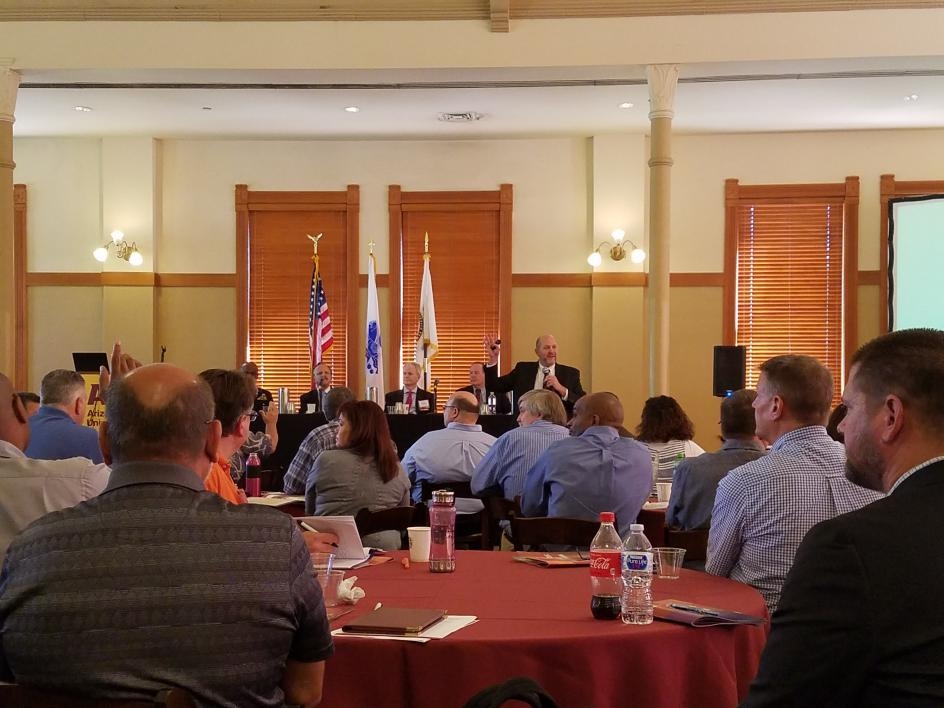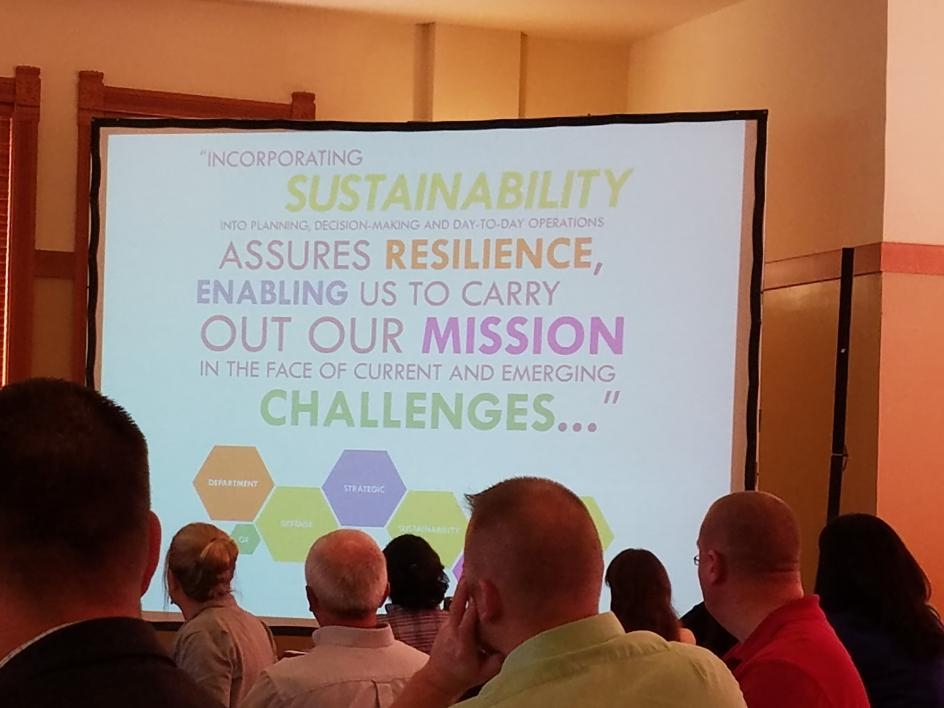ASU-hosted Army Reserve training seeks to take sustainability to the next level
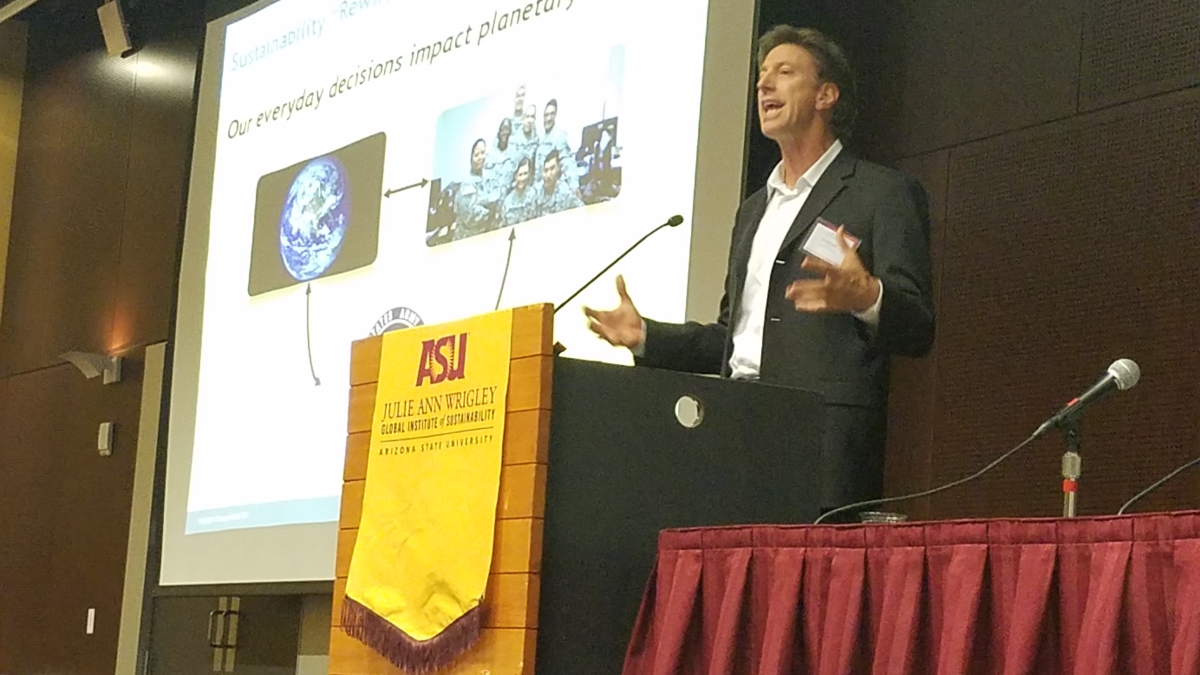
Changing the “sustainability DNA” of their organizations was the mandate given to over 150 military personnel, Department of the Army civilians and contractors during an inaugural training conference hosted by Arizona State University Nov. 6–8.
During opening conference remarks, Addison D. “Tad” Davis, principal deputy assistant secretary of defense for energy, Iinstallations and the environment, called on the Army Reserve Mission Resilience and Sustainability (ARMRS) training attendees to “do a deep dive” into their organizations to create, transform, and reformat new processes.
“It’s everything from the way which we design buildings to the way which we process our waste water,” Davis said. “So if we can come up with designs and other procedures from an engineering standpoint or otherwise, retooling, rearrange DNA so we have a more sustainable outcome … it’s extremely important.”
Davis urged the gathered sustainability subject matter experts and program managers to take full advantage of their time at ASU because it’s a unique opportunity.
“When you think about sustainability as a whole, you’re there,” Davis said. “ASU is the center of the sustainability universe in this country.”
In 2006, ASU became the first university in the nation to establish a school dedicated to sustainability, and has since built a reputation for being the leader on the topic.
“We’re very proud of the fact that we were the first, but we don’t let it sit there,” said Christopher Boone, dean of ASU’s School of Sustainability, during his welcome remarks. “We want to make sure that we’re not only the first in terms of chronology but also first in terms of quality, and I know from speaking with colleagues around the country that’s certainly the case. We are perceived as the number one university when it comes to sustainability.”
ARMRS training is designed to bring together all subject matter experts in the areas of energy security, water security, solid waste diversion and environmental quality from across the Army Reserve to encourage collaboration and foster innovation.
Sustainability is not new to the Army Reserve. The organization has made significant strides in the past five years, including reducing its energy use by 17.9 percent in 2016; and through water conservation and efficiency efforts, reduced water use by 51 percent since 2007; but more work remains.
“I think we’re at the tipping point,” said Paul Wirt, chief of the Army Reserve Sustainability Programs Branch. “We’ve done all the baseline stuff. We’ve done the strategies. We’ve built the programs. But this is the tipping point, what we’re doing this week and our path forward of how to make the Army Reserve even greater.”
Wirt sees this week as a kickoff to a much broader initiative to expand sustainability beyond the four base programs — energy, water, waste and environmental. Sustainability must be factored across the spectrum of activities including land use and natural resources, building facilities, infrastructure, transportation, product lifecycle, etc.
“Finally, the most important component of sustainability is the people aspect of it,” Wirt said. “Everything must be tied to the well being of the people that are part of any organization.”
For Joe Knott, who is an ASU doctoral candidate in the School of Sustainability and retired Army lieutenant colonel, sustainability is also about establishing a standard.
“Paul (Wirt) could walk around the Pentagon and ask ten squared away colonels what sustainability means and he gets ten great answers,” Knott said. “We have to have the base foundation of what role we play in it, and why we do it, and what it is.”
The base foundation is established through education, Knott said. ASU’s School of Sustainability has developed graduate level sustainability courses tailored to raise understanding among more senior civilian leaders and military officers. Without understanding, it becomes difficult to gain fiscal backing for sustainability programs.
Young people today are better versed in sustainability and such subjects as climate change. They expect green efforts, said Knott. If they see that the Army does not have a strong sustainability culture, it can impact retention.
“They expect sustainability and doing the right thing in addition to serving their country,” Knott said. “They say ‘what are you as a military organization going to allow me to do to make this earth sustainable for my kids and grandkids?’.”
One of the best possible outcomes from the ARMRS conference for Knott is future collaboration with the Army Reserve.
“If someone asked me what I thought would be one of the great results of these three days, it’s Paul Wirt’s team working with ASU’s School of Sustainability to develop courses that empower the folks on the ground at the Reserve installations to be sustainable and make that culture change happen," Knott said.
Top photo: George Basile, professor of practice with ASU’s Julie Ann Wrigley Institute of Sustainability, speaks about culture change Nov. 7 inside the Memorial Union during the inaugural Army Reserve Mission Resilience and Sustainability training held on Tempe campus. Photo by Jerry Gonzalez/ASU
More Environment and sustainability
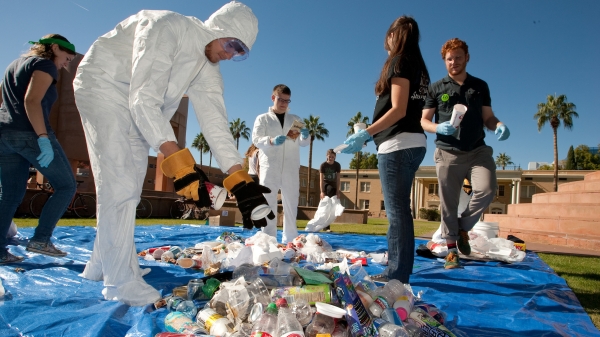
Confusion complicates US recycling efforts
In most major cities and buildings, recycling bins can often be found alongside trash bins in an effort to encourage recycling. But is it working? According to the U.S. Environmental Protection…
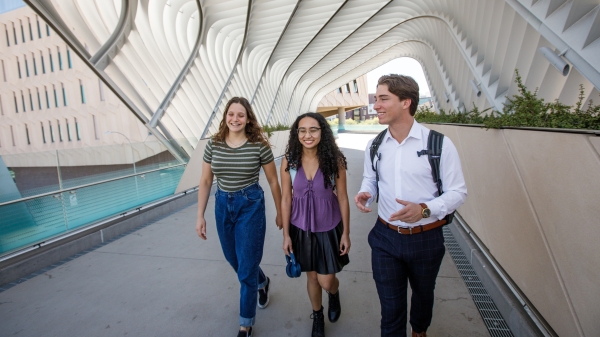
ASU empowers students to build a thriving global future
At Arizona State University, leadership has made tremendous efforts to create programs and initiatives aimed at supporting a healthy planet and thriving future for all life — and now, more than ever…
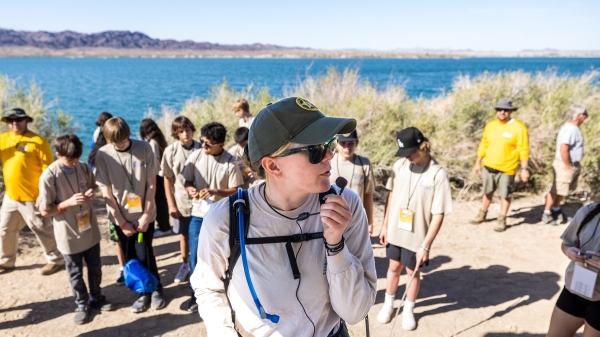
Colorado River becomes an outdoor classroom for these middle school students
Griffin Freburg doesn’t usually look forward to science class. But on a sunny day in March, the eighth grader changed his tune. Concepts that were usually explained in long paragraphs in a textbook…
